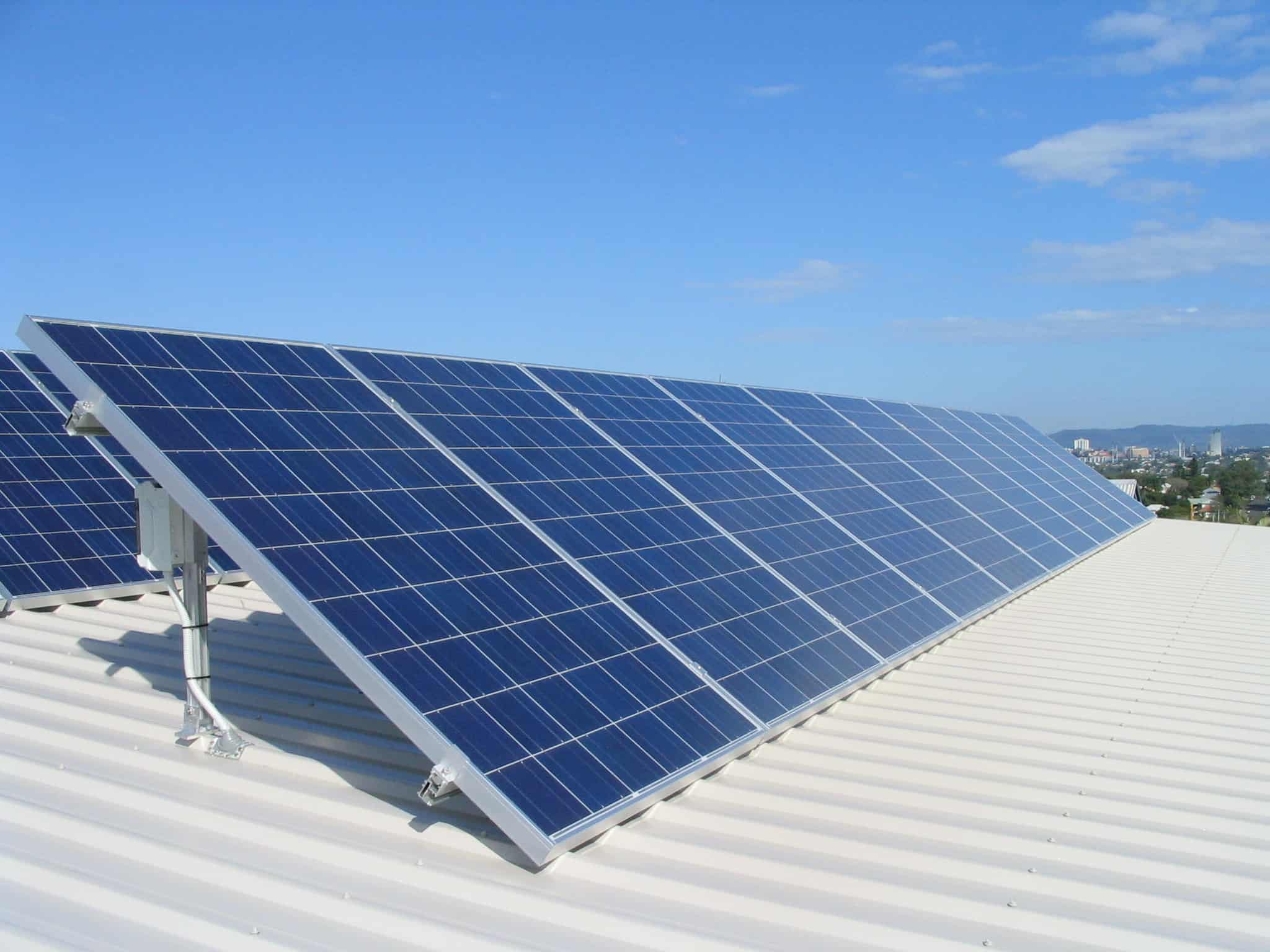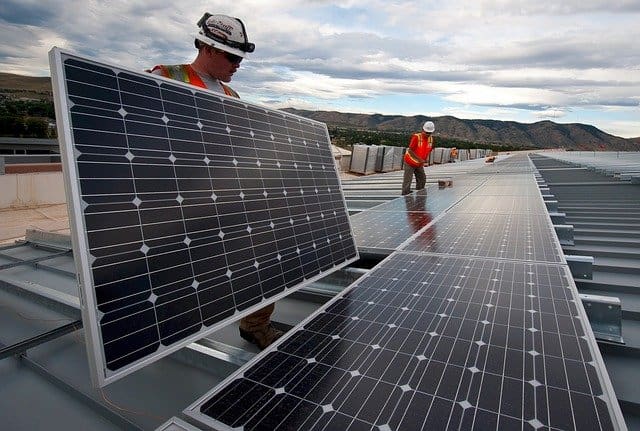The modern world depends on energy. Everything we come across today depends on one or more forms of energy. The automobile industry, aeronautics industry, the aviation industry, agriculture, health sector, the information technology sector is among the industries that depend on different sources of energy to run their daily operations.
Electricity, popularly known as electric power or just power, is the most common form of energy that’s used in our daily lives.
Electricity is generated from different sources such as the burning of fossil fuels, wind, water through hydroelectric generators, burning of coal, steam from underground sources and also solar energy.
The cost of power generation varies from a source to another. For example, setting up a nuclear power plant is far much expensive compared to running a diesel engine, when both are used to generate electric energy. Most of the natural resources used to generate electric energy are nonrenewable.
This means once the resource is used, it is deleted and can never be used again. Sources such as fossil fuels combust producing by-products that are even harmful to the environment.
However, renewable sources such as wind, water and solar are convenient and readily available all every day.
Introduction To Solar Energy
Due to the increased demand for cheaper, environmentally friendly and convenient sources of energy, the researcher worked hard to come up with different sources of energy.
Scientists discovered that solar energy was naturally available for lighting during the day, and at times, responsible for the moonlight we enjoy at night. Solar energy is available throughout the year.
Light energy from the sunlight the world, heat energy from the sun has various uses.
We dry our clothes, grains and other foods stuff using the heat energy from the sun. Due to the high cost of fuels late in the 19th century, scientists began finding alternative sources of energy.
When William Grill’s Adams, together with his student discovered that selenium cells could produce electric energy when exposed to light, this was the beginning of a new era in the energy sector.
Although selenium cells were not effective, the scientific community knew that light could be used to generate electricity.
In the mid-20th century, silicon cells were discovered and could produce a reliable amount of electricity that drove small electric devices. During this time, the cost of solar energy was still high and was not as popular as it is today.
Unlike the national grid that must have a physical connection, solar cells are relatively small, convenient and portable, and have proven the best choice for people living in remote areas.
The application of solar cells cuts across different applications, ranging from solar cars, solar-powered aircraft, water pumps, lighting street lights among others.
Economic Impacts Of Solar Energy
Although renewable energy, specifically from wind and solar represents a small fraction of the world’s sources of energy, it is still gaining popularity every day around the world.
The US is the greatest consumer of solar energy in the world. Solar energy is used mainly in two sectors as far as the world technology has developed: the photovoltaic technology and thermal technology.
Solar energy is a naturally available, renewable source of energy, whose cost of investment is far much below the cost of any other alternative source of energy.
Solar use of solar energy has made life easier for people living in remote areas where homes are not connected to electricity. Also, solar energy once preserved works a backup source of power in case of power outages or surges.
Positive Economic Impacts of Solar Energy.
- Affordable living: Most people in the developed, as well as the developed world, strive to live an affordable life. With the low cost and high levels of convenience, solar energy presents a perfect choice for them. Imagine a situation where people struggle to light up their houses at night, a situation where people struggle to pay electric bills every month of the year. Solar energy has come up with an alternative, one-long term solution.
- Environmental preservation: The destruction of the environment and the ozone layer resulting from the combustion of fossil fuels and the emission of greenhouse gases is an irreversible destruction of the environment (Sampaio et al, 2017). The costs of preserving the environment from tanker accidents, oil spillages, and fires are too high for some countries. Solar energy does not pollute the environment, rather, it exploits the usefulness of the environment by converting solar energy to heat or electric energy. Any resources that could have been used to reclaim the environment destroyed by the use of fossil fuels could be used to develop infrastructures such as hospitals and roads.
- Low cost of goods and services: The adoption of solar technology by big companies and service providers lowers the cost of production. This translates to lower costs of goods and services, increasing affordability while maximizing profits. Whenever the costs of goods and services are high, for example in a country that imports energy, the cost of living is also high and most of the targeted customers may not afford the goods or services provided by a particular company or organization. Such companies usually incur losses.
- Investment opportunities for startup companies: The use of solar technology provides an amble ground for youths and other investors to start up a small business such as movie shows, cinema halls, barbershops, and phone charging services. As a result, the living standard of such people, as well as those of their immediate dependents are improved, and the general lifestyle of the community is also improved. In cases where other sources of energy are used, say, coal or petroleum products, the maintenance costs are high, translating to the high cost of living and subsequent poverty.
- Job opportunities for professionals: The industrial manufacturing of solar cells creates job opportunities for different professionals. For example, electrical engineers, planners, marketing specialists among other professions secure jobs with the manufacturing companies. More so, others also secure installation jobs as electricians due to the implementation of this technology. The world population rises every day, while job opportunities get scarce every day. Solar technology has created jobs for thousands of jobless professionals around the world.
- Naturally, locally available resource: Solar energy is a freely available natural resource that is directly related to light intensity. This resource is available in every country, so it doesn’t have to be imported. Unlike petroleum oil which is only available in some countries, underground steam pools found in some countries or nuclear reactants found in some countries, every region, country and part of the world receives sunlight.
- Government taxes: Companies that manufacture pay taxes to their respective governments. When the solar is exported, countries earn import of export duties. The sale of solar panels is subject to tax tariffs generating revenue for governments. The governments hence use the generated revenue to pay employee salaries as well as funding development projects.
- Tax credits: Despite the cost-effectiveness of solar energy systems, solar energy users enjoy government subsidies. For example, in the United States, solar energy users enjoy renewable energy tax credit. They enjoy up to 30% for expenditures incurred for the spaces occupied. Similar privileges are enjoyed by geothermal and wind systems. Countries in Europe practice a feed-in-tariff to motivate citizens to use renewable energy. Here, those using renewable energy can receive some monetary benefits from the government. The benefits depend on the country and are based on kWh of power consumed.
- Enhancement of Innovation: In the development and the advancement of solar energy and all the activities that come with it, a lot of innovation is significantly required in the improvement of the current and the olden days’ activities of handling solar energy. There is a thump on the impact of the expanded spotlight on sun-powered and efficient power vitality for different organizations as well. Vehicle assembling organizations will see a chance to grow progressively electric vehicles that can join sun oriented vitality into fueling them. This makes new openings and in different parts, a comparable wonder may happen. It reduces the dependence on petroleum derivatives which is probably going to have a negative effect upon occupations in that segment after some time.
- Encourages international Trade: Solar energy facilitates the improvement and the encouragement of international trading from a number of activities with an example of the exportation of energy. As the worldwide interest for sun-powered vitality builds it gives an incredible chance to nations to begin or increase their creation of related materials. From sun oriented boards to PV test packs, there are numerous particular items that are basic for utilizing sun based vitality which isn’t accessible in each nation. This makes a splendid opportunity to lift trades as the market will be there and it looks set to further improve in the coming years. Supply sun oriented boards to vitality organizations abroad to sell on or search out greater arrangements by giving government items. Improved fares should see everything from the nation’s money to stocks improve.
- Lowers dependency on Imported forms of energy: When a country produces adequate solar power that meets the demands of its citizens, that reduces and minimizes the great need of imported forms of energy which consequently saves the country’s economy in the monetary value used in importing fuels to the country and instead use the importation fee in development improvement in the state. Similarly, that sun based power can expand trades it will likewise lessen the requirement for bringing in comparative items and options. There will be a decrease in the requirement for coal, oil, and gas being imported which can help stay away from conditional political circumstances and the dependence on overwhelming forces, for example, the ongoing authorizations forced upon Russia.
- Reduction of individual Expenditure on Power: upon the installation of the solar system for the production of basic consumption, there is a significant decrease in the amount of money paid to the main grid power sources for the amount of power consumed. This consequently leads to much savings compared to when the expenditure on grid power was. Producing your own power implies that you will utilize less from the utility provider. This will promptly mean investment funds on your vitality bill. Additionally, you can likewise make cash by selling the unused power, which you have created, back to the matrix. Through sun oriented board awards offered, you can make your green speculation considerably progressively valuable. The more vitality you produce, the less you will require from the provider which will build your vitality confidence.
- Increase in Aesthetic Value: the aesthetic value of a home with solar systems increases more than a homestead that has no installed solar system. When the aesthetic value increases of a property, it consequently increases the total value of the property in the case where the property owner decides to put the property on sale. This is compared to the homes without an installed solar system.
Negative Economic Impacts of Solar Energy
Apart from the many positive economic impacts of solar energy, it also has a few negative economic impacts which come with it in the same package. Among the negative impacts of solar energy include the following:
- Expensive installation: The installation of solar systems comes with a very high cost of installation. The expense of initially installing a solar system comes with the purchase of the various components of the solar system which among them include solar panel, batteries for the conversion of the solar radiation to electric power, transportation of the relevant materials from the place of manufacturing to the point of installation and also the human capital required in executing the mandate of installation. This requires a lot of capital in which a solar energy consumer who has no capital for the installation of the expensive solar system may incur a lot of economical retention if they really want to have the system in place.
- Expensive storage: Warm mass and water tanks are the two essential strategies for putting away sun oriented vitality in sun based space warming frameworks. Warm Mass: Used in both aloof and dynamic space warming frameworks. Assimilates heat during the day and gradually discharges it around evening time. Water Tanks: Used in dynamic fluid frameworks. Also among the storage are the batteries which are expensive to also acquire and maintains since they don’t use water but use specific battery water which is also expensive to acquire.
- Dependent on whether: Though sun powered vitality can at present be gathered during shady and blustery days, the effectiveness of the close planetary system drops. Along these lines, a couple of shady, blustery days can noticeably affect the vitality framework. You ought to likewise consider that sun oriented vitality can’t be gathered during the night. For the times when solar radiations are low and there has been a low efficiency in collection of the energy, I consider using an alternative source of energy to power it. Another alternative would be in the case where I choose to increase the scale of the system to increase the scale of harvesting to cater to the days when there is a reduction in the intensity of solar radiation.
Conclusion
The adoption of solar energy systems has a great impact on the economic lives of different individuals as well as countries. The use of solar energy lowers the cost of production, resulting in reduced prices for different goods and services. It also helps create job opportunities for professionals and startup investors. As renewable resources become more powerful, how extensively and in what manner communities use solar energy will affect how that energy impacts the economy. Large, centralized solar power plants and solar cell factories will affect the economy much differently than local factories and distributed solar power. The adoption of solar energy must continue so we can address the negative societal and economic impacts of dirty fossil fuels.
References:
Fares, R. L., & Webber, M. E. (2017). The impacts of storing solar energy in the home to reduce reliance on the utility. Nature Energy, 2(2), 17001.
Mahmud, K., Amin, U., Hossain, M. J., & Ravishankar, J. (2018). Computational tools for design, analysis, and management of residential energy systems. Applied Energy, 221, 535-556.
Sampaio, P. G. V., & González, M. O. A. (2017). Photovoltaic solar energy: Conceptual framework. Renewable and Sustainable Energy Reviews, 74, 590-601.





VERY GOOD INFORMATION ABOUT SOLAR TECHNOLOGY. The adoption of solar energy systems has a great impact on the economic lives of different individuals as well as countries. The use of solar energy lowers the cost of production, resulting in reduced prices for different goods and services. It also helps create job opportunities for professionals and startup investors. As renewable resources become more powerful, how extensively and in what manner communities use solar energy will affect how that energy impacts the economy. Large, centralized solar power plants and solar cell factories will affect the economy much differently than local factories and distributed solar power. The adoption of solar energy must continue so we can address the negative societal and economic impacts of dirty fossil fuels.
what is sposnor of this site=https://www.riddlelife.com/
It is self sponserd site.
“This was really informative. I’m looking to go solar energy philippines soon—are there ways to save on installation costs, or is it best to go with the full setup?”